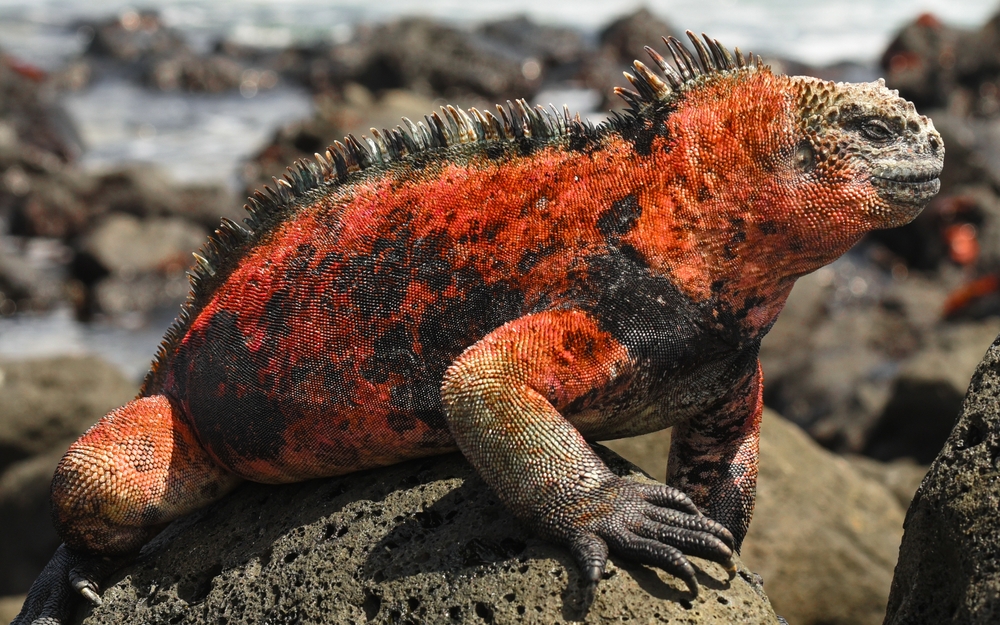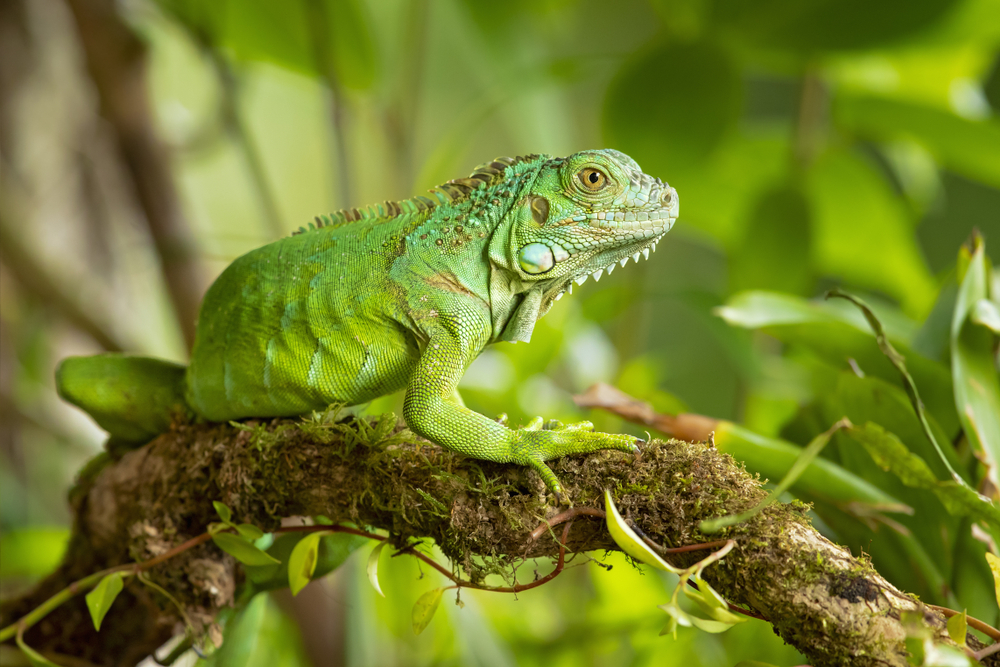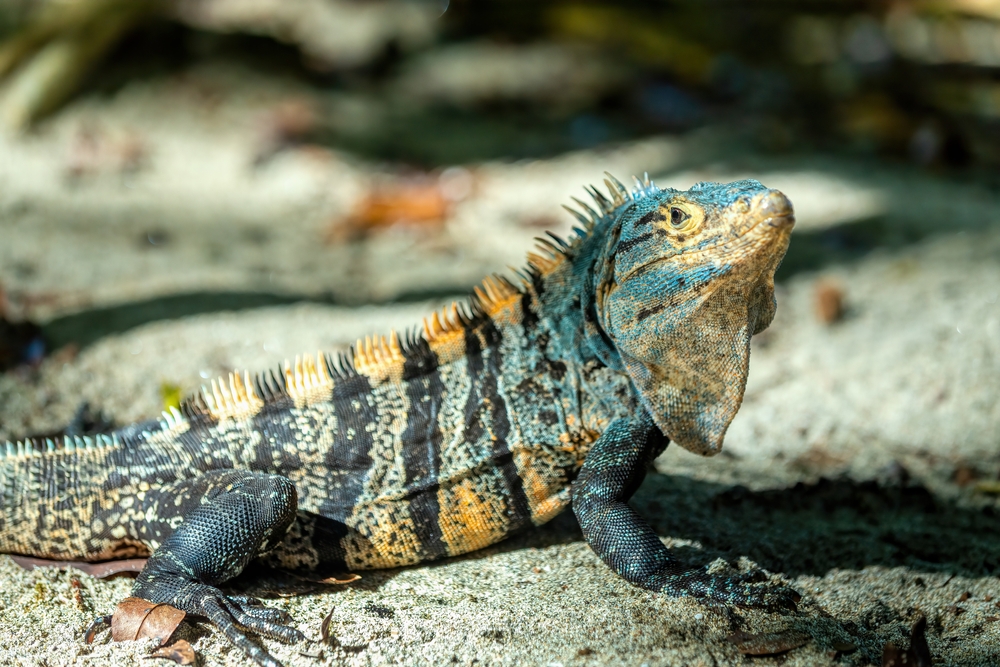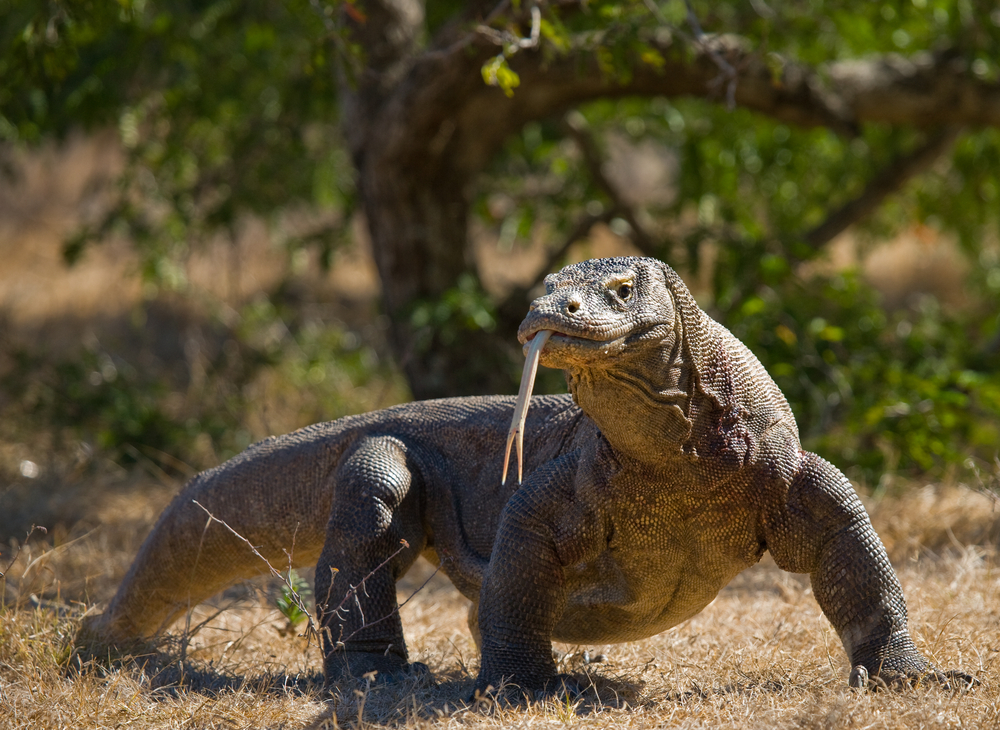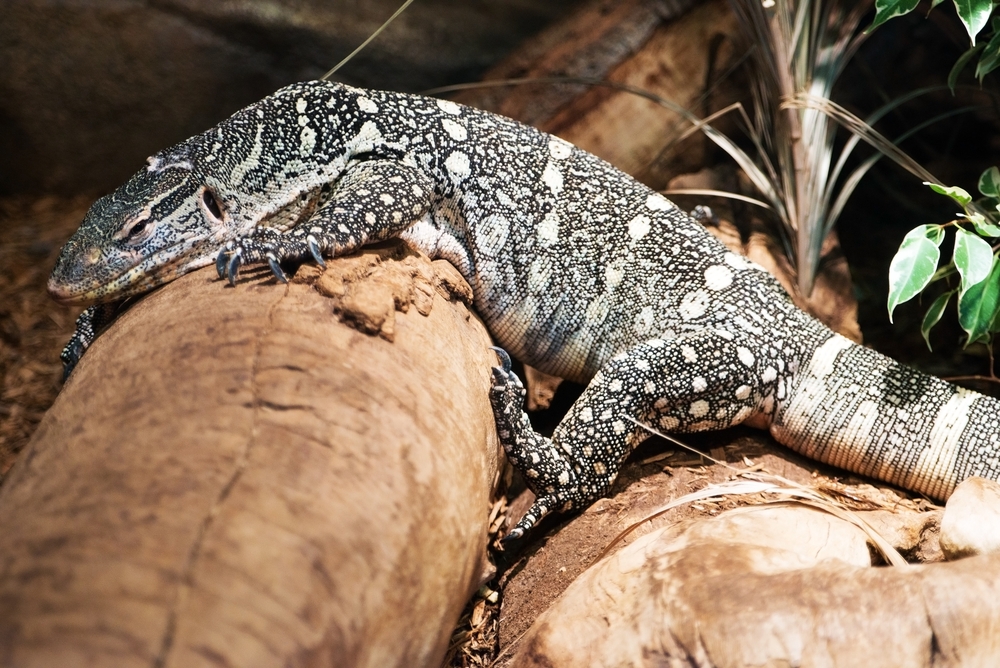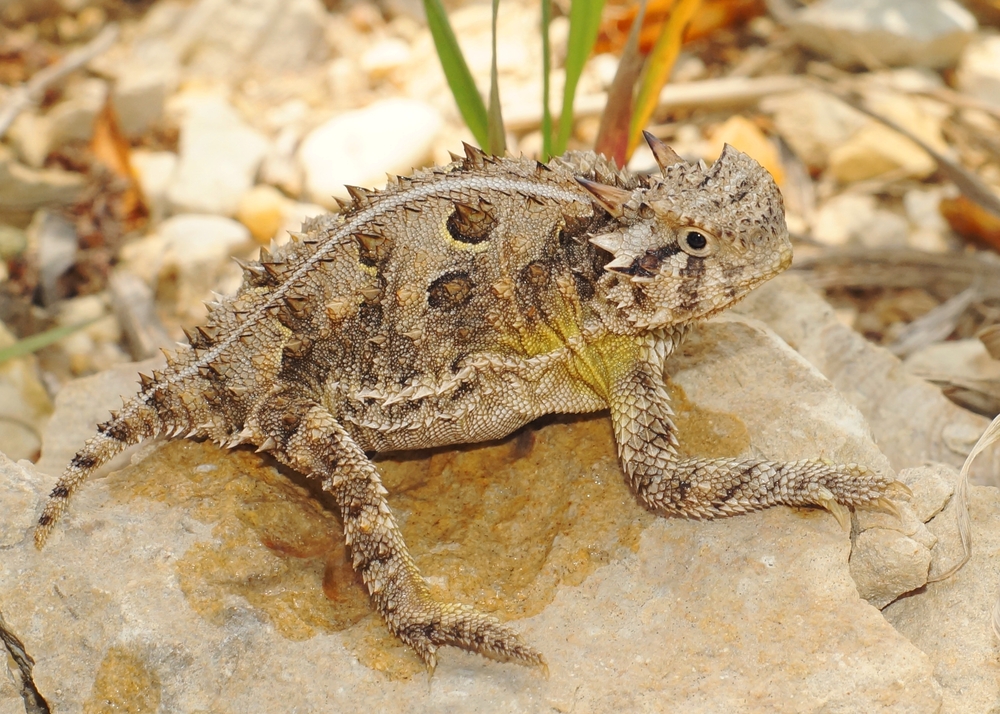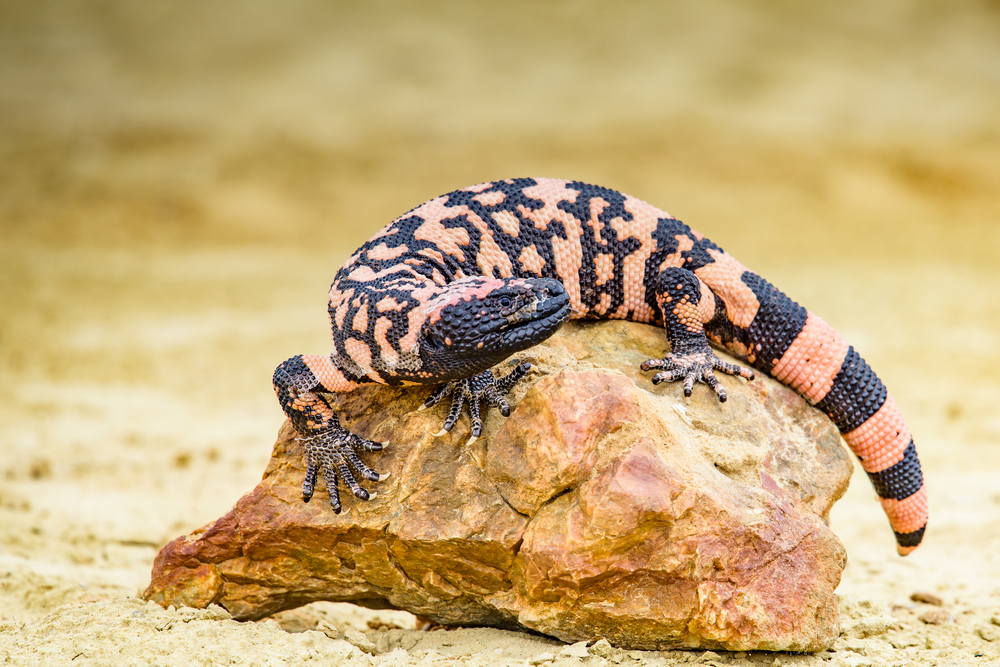Uniqueness
The Christmas Iguana is one of the most colorful and ecologically specialized reptiles on Earth. As a subspecies of the marine iguana, it shares the remarkable ocean-foraging adaptations of its relatives while displaying a distinctive red-and-green breeding coloration found only on Española Island in the Galápagos.
The Only Marine Lizard:
Christmas Iguanas, like all marine iguanas, are the only lizards in the world that forage in the sea. Their ability to swim, dive, and graze algae underwater sets them apart from all other reptile species.
Brilliant Holiday Colors:
Their festive nickname comes from the vivid red and green coloration displayed by males during breeding season—making them the most visually striking of all marine iguana subspecies. The red intensifies on the head, shoulders, and limbs, while green highlights the dorsal scales and back.
Island Endemism and Genetic Isolation:
Christmas Iguanas are found exclusively on Española Island, making them one of the most geographically restricted vertebrates in the Galápagos. Their physical and behavioral traits have diverged from other marine iguanas due to long-term isolation and local environmental pressures.
Extreme Thermal Behavior:
They feed in cold ocean waters, then return to shore to bask on sun-heated volcanic rock, raising their body temperature by as much as 20°C (36°F). This precise thermoregulation is crucial to digesting algae and avoiding cold-induced torpor.
Salt-Sneezing Reptiles:
Christmas Iguanas excrete excess salt through specialized nasal glands, often expelling salt in a fine mist or crust. This adaptation is critical for marine feeding and prevents internal salt buildup.
Survival Through Starvation:
During El Niño events, food shortages lead to widespread weight loss and mortality. Yet, Christmas Iguanas can shrink internal organs and bone mass to survive prolonged starvation—an extreme physiological adaptation rarely seen in vertebrates.
The Christmas Iguana’s combination of marine ecology, limited range, intense coloration, and evolutionary resilience makes it one of the most iconic and unique reptiles in the world—and a symbol of Galápagos endemism.



































































